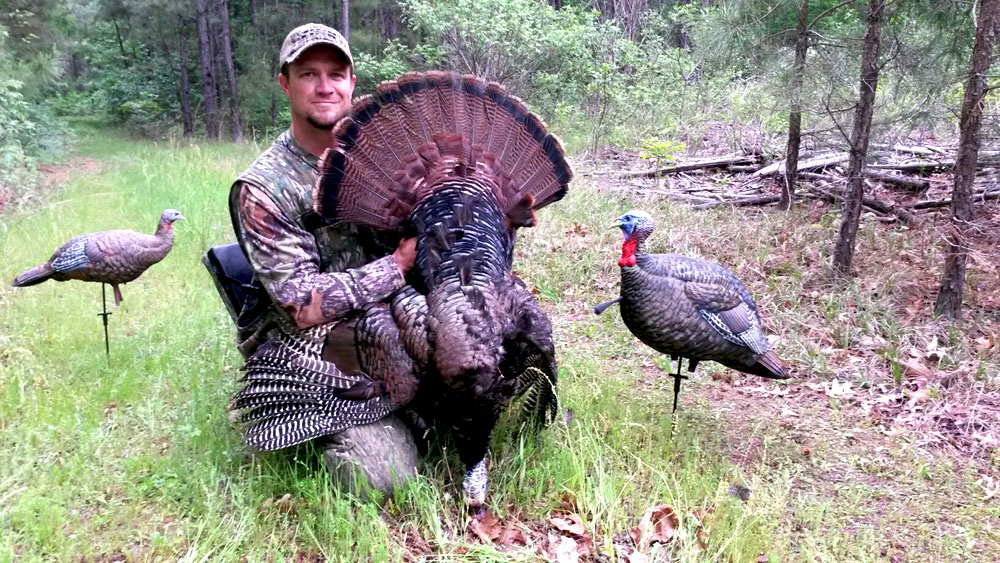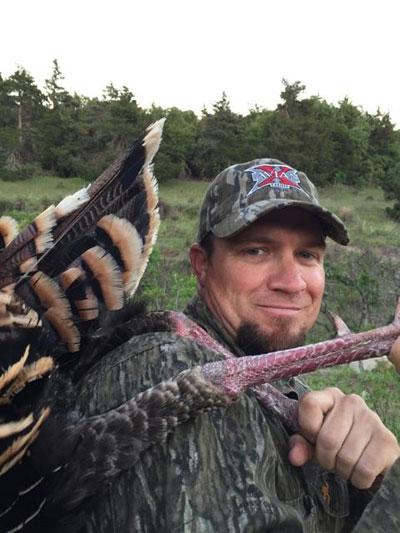Shane Smith

Turkey season has started. It has been a long summer through winter as we patiently wait to hear that first thundering gobble break the morning silence this spring. I hope that you have been practicing up on your cutting, yelping and purring in the offseason, because it’s time to talk the language of love to big mature longbeards. Hunting turkeys in the first part of the season is quite a bit different than hunting birds at the tail end.
Here are 4 of my favorite early season tips and tricks to talk ole tom into range:
1.Find a Roost. If it all possible, try and scout the area and have a general idea of where the birds are roosting. I know that the birds may move quite a ways from roost to roost, but these areas will typically hold birds throughout the early part of the season. These areas include: creek bottoms with large standing timber, clear cuts with a few large trees left on the edges, large overhanging trees above water, large pine plantations and trees in high points of elevation. Knowing where the birds sleep puts you that much further ahead of the game.
 2.Get Aggressive. For me this is when the birds are full of testosterone and gobbling to beat the band. They have yet to feel much or any hunting pressure, so in my opinion it’s the best time to really hit ‘um hard on the calls. Now, that being said, you still need to read the birds. If they are responding negatively to what you are doing, then dial it back. But in the early season, I will start off fairly aggressive and be ready to adjust rather than call soft and be ready to get loud.
2.Get Aggressive. For me this is when the birds are full of testosterone and gobbling to beat the band. They have yet to feel much or any hunting pressure, so in my opinion it’s the best time to really hit ‘um hard on the calls. Now, that being said, you still need to read the birds. If they are responding negatively to what you are doing, then dial it back. But in the early season, I will start off fairly aggressive and be ready to adjust rather than call soft and be ready to get loud.
3.Use Multiple Decoys. At this point the birds haven’t seen a lot of decoys and are drawn to them a bit more naturally. When I first started hunting, all I ever used was a single hen. There were times it got the job done, but not having a Jake or Full Strutter really hurt me at times as well. I prefer to use an Avian-X Breeder Hen and the Avian-X Quarter Strut Jake for most applications. This dynamic duo will fit in a small decoy bag and is very easy to run and gun with. However, if I know I am hunting a field bird situation, I will opt for an Avian-X Full Strut and the Breeder Hen. If you have room and can carry it, add the Quarter Strut Jake as well. This is more of a get down and set up type of hunting rather than keeping boots on the ground chasing all day. Early on, I like to use some decoys as visual aids and it keeps their eyes off of me.
4.Get Hid & Get Still. When the birds are ringing out double and triple gobbles, we are not the only ones who take notice. Ole Mr. Fox, Coyote and Bobcat hear them loud and clear. To them it sounds like fresh crappie being dropped into the grease. When these birds are spitting and drumming up a storm, keep still as possible. It is human nature to want to fidget and move since your leg has been numb from the knee down for 30 minutes now. When a bird has gobbled a ton and has gone silent and you even remotely THINK he is headed your way, stay as still as a statue if you can. We have all reached up to swat a mosquito and, yep, immediately hear putting then see the tom running away like Usain Bolt! When you are picking your hide, try and get a good back drop and a tree that is larger than yourself. Try not to select a tree that is directly in front of your decoys so the bird won’t be staring directly at you on his approach. There are no free lunches when it comes to your hide. If he can see you, he won’t come in. It’s really that simple.
I know some of these may sound a bit basic to some experienced long beard killers, but basics kill birds. Everyone wants to hear something new and revolutionary, but day in and out these 4 tactics will help you jelly head that big ole boss tom early this spring.



























